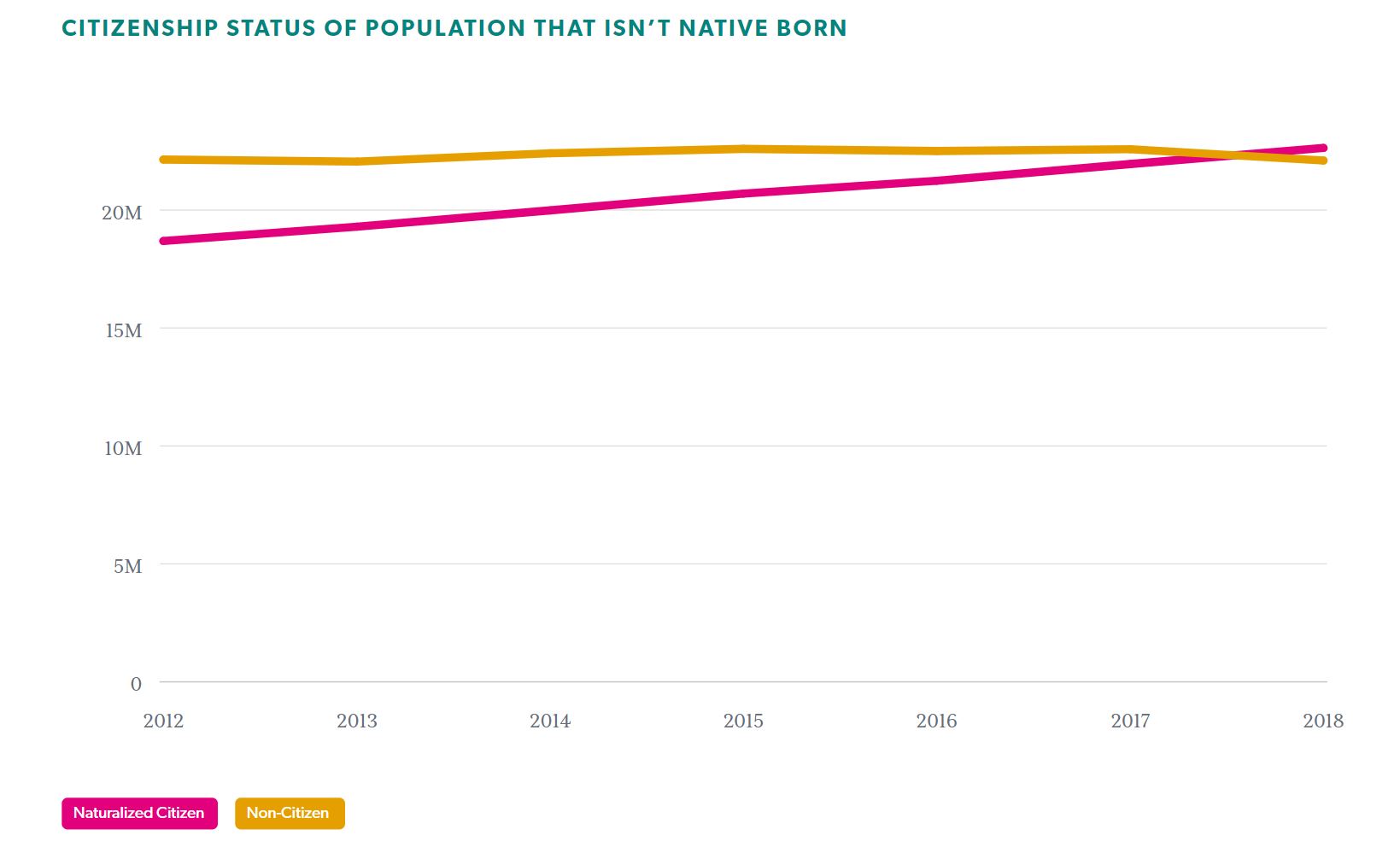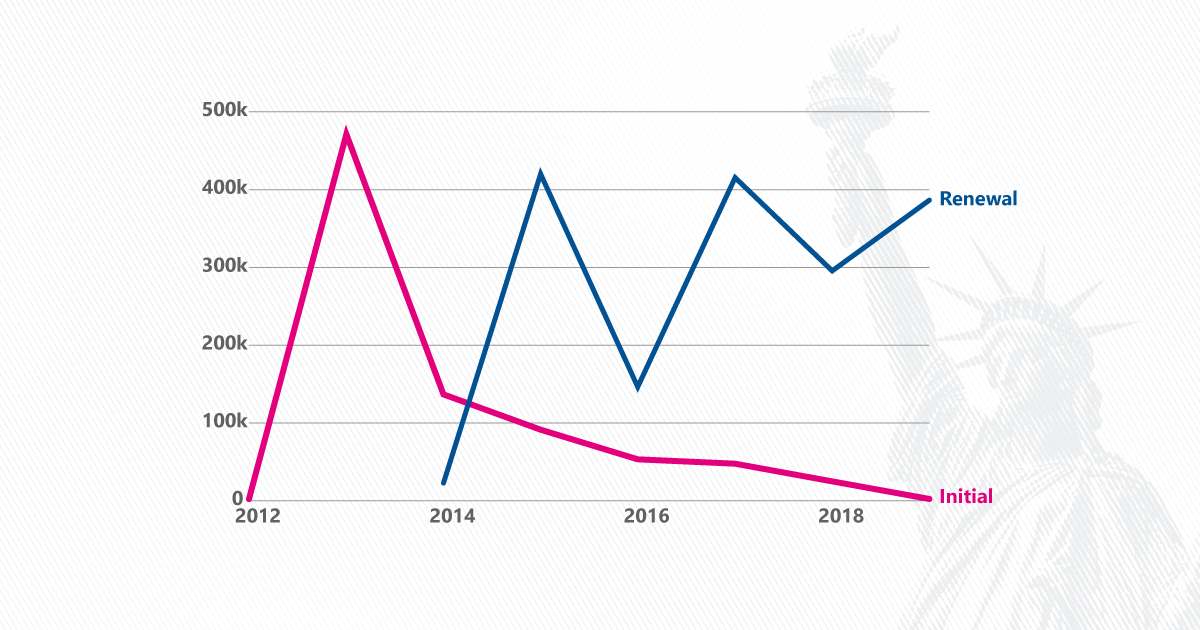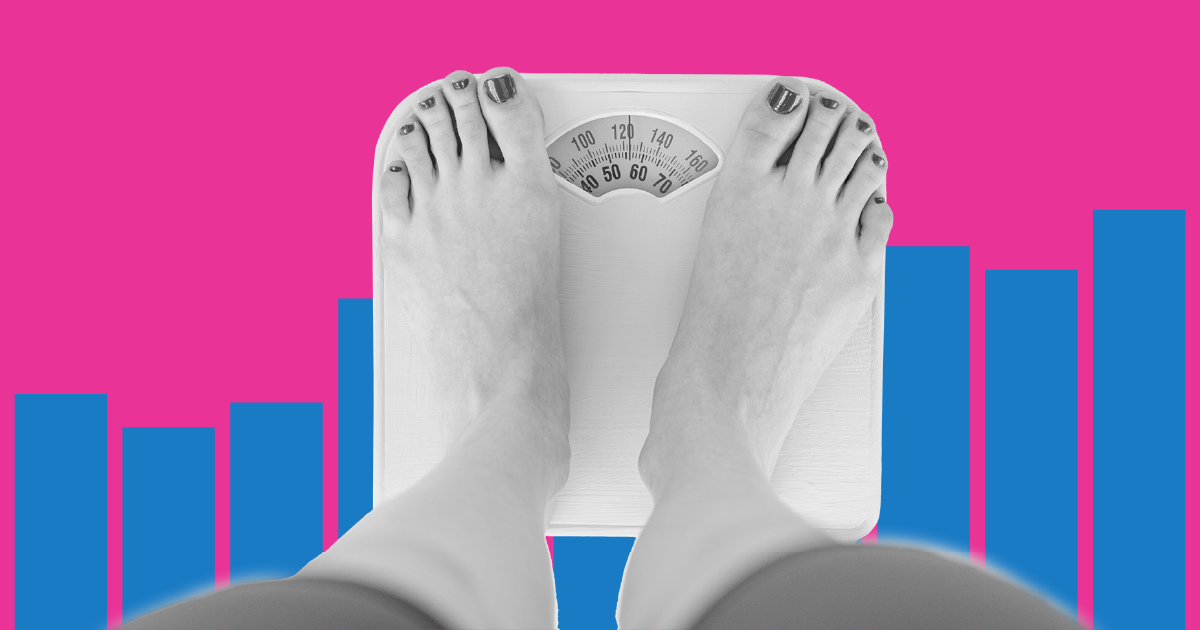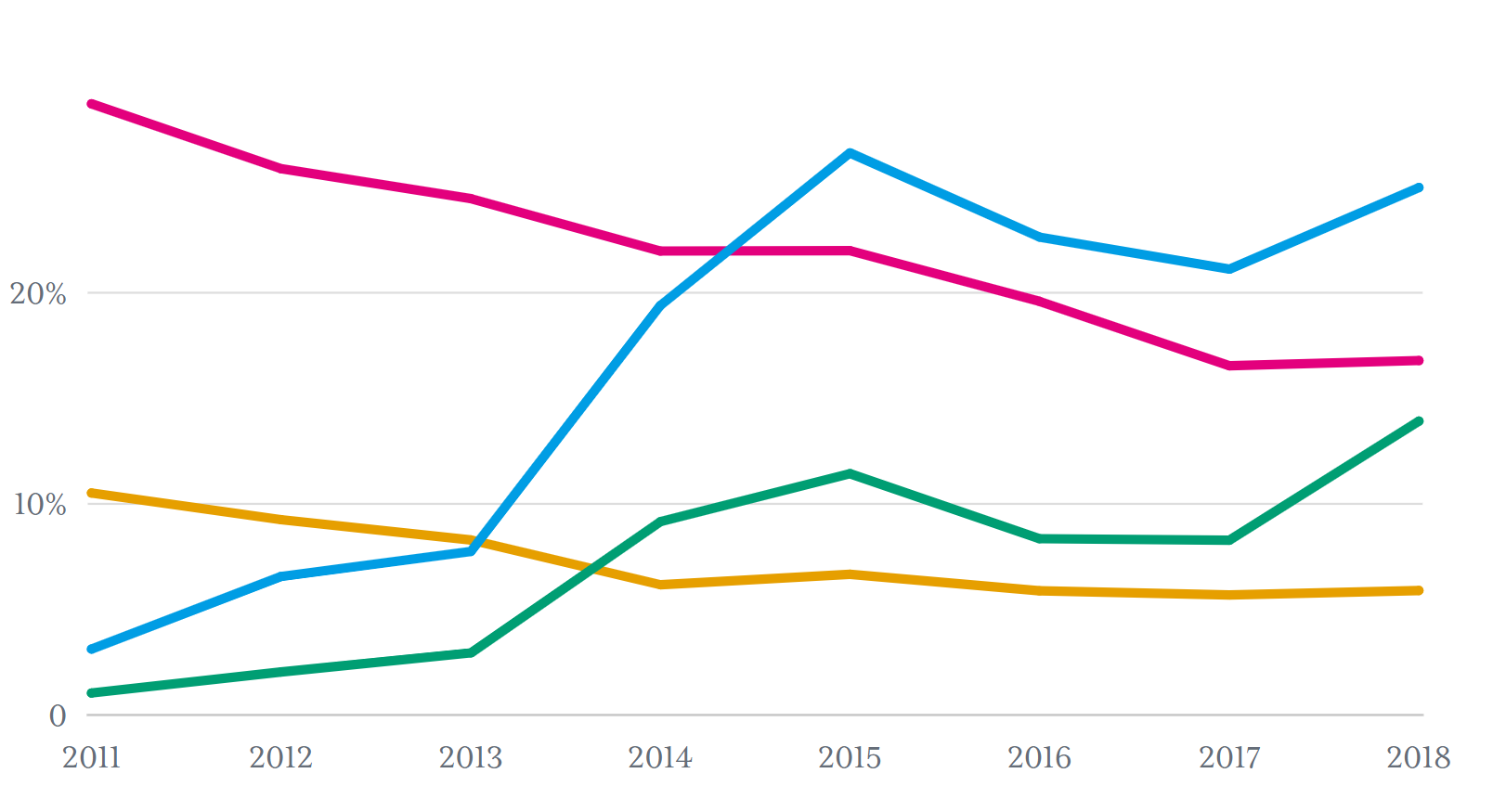Population
Immigration demographics: A look at the native and foreign-born populations

Health
Health
Most is spent on hospitals (39%), physicians (24%), and prescription drugs (11%), with the remainder spent on dental services, nursing care, and other health needs.
Health
Medicare and Medicaid spend more per enrollee than private insurance while covering populations that are older and more impoverished, respectively. Per enrollee spending for Medicare and Medicaid has remained flat, however, while private insurance spending is increasing, adjusting for inflation.
Health
Fewer Americans directly buy insurance or receive Medicaid coverage than in 2016.
Health
The life expectancy for Non-Hispanic white people is more than three years longer than for Black people.
Health
However, the fastest growing causes of death since 1999 are accidents (including drug overdoses) and Alzheimer’s, for which age-adjusted death rates have increased 36% and 85%, respectively.
Explore the Health Big Picture
Population
Population
Health
Health
Health
Newsletter
Keep up with the latest data and most popular content.



